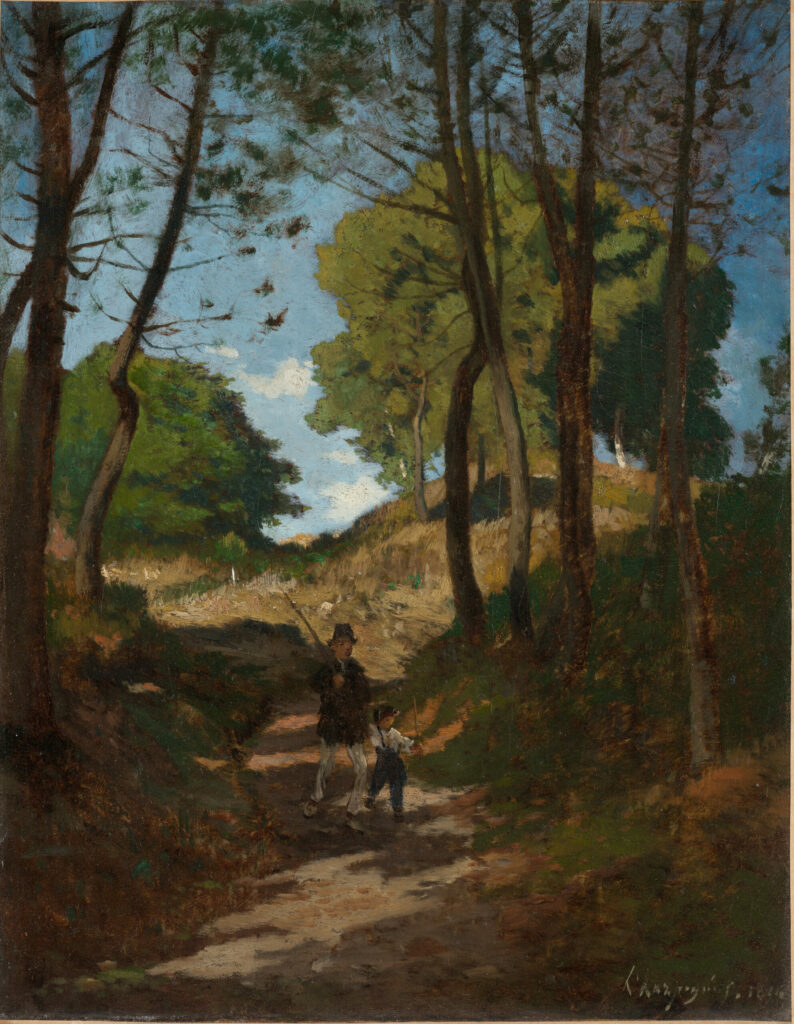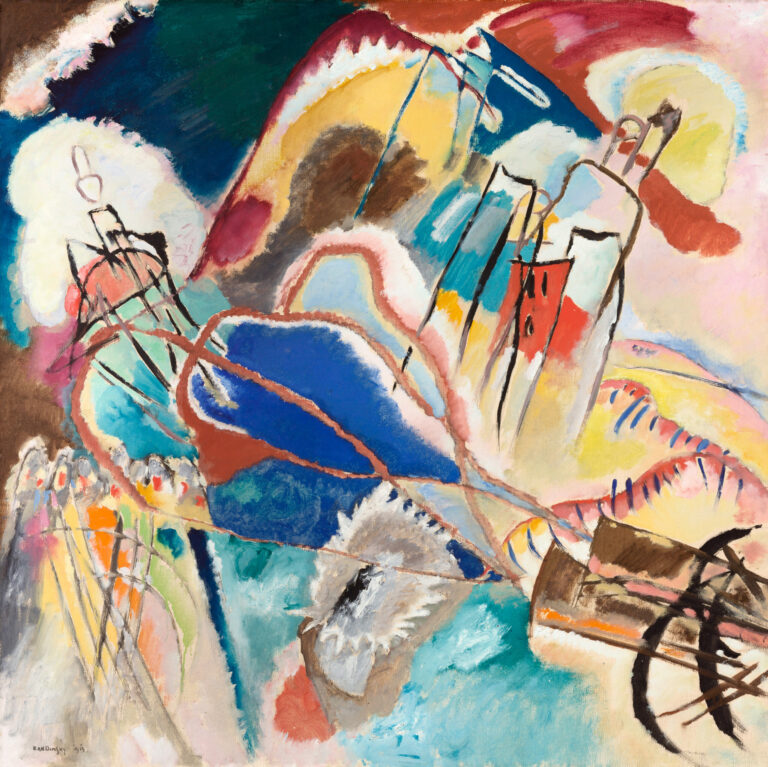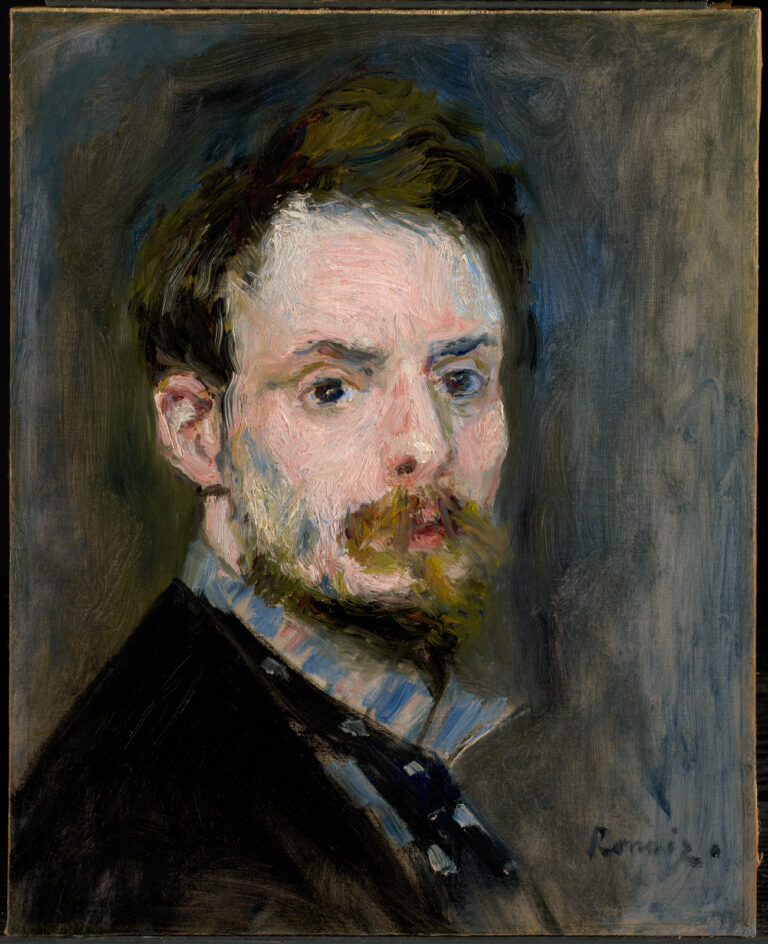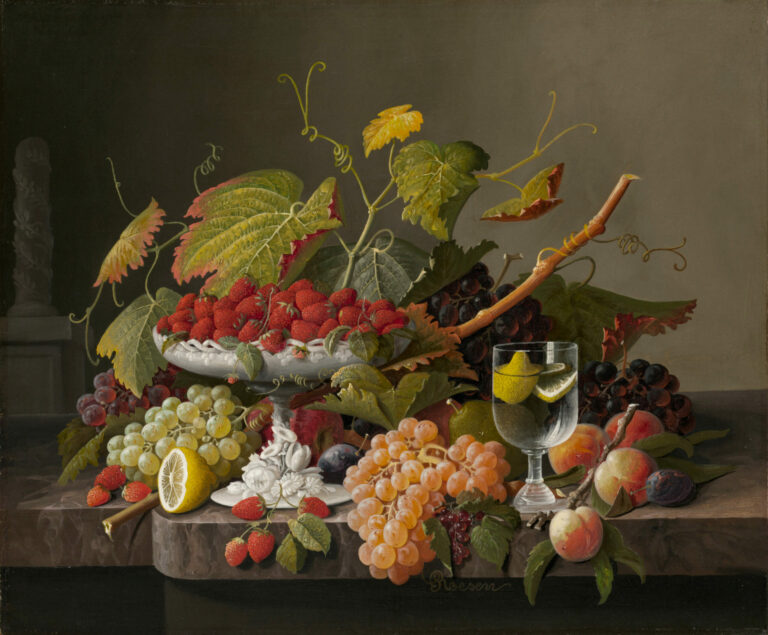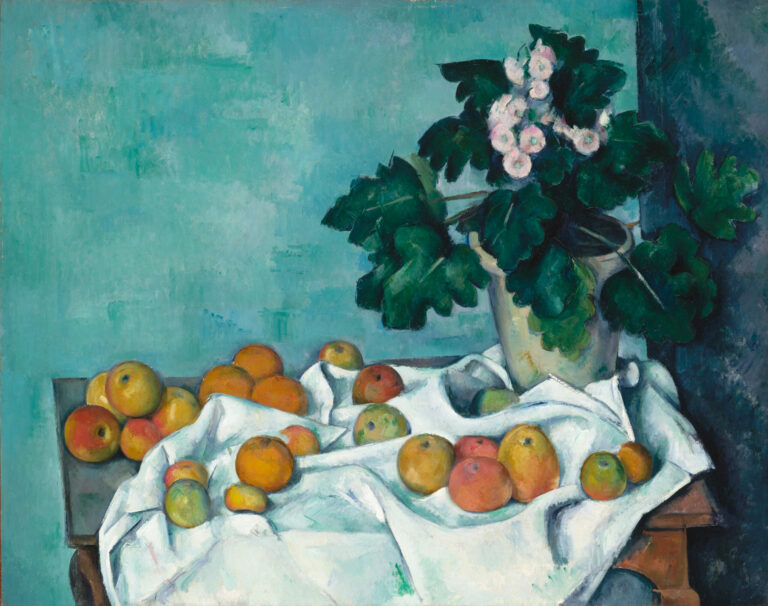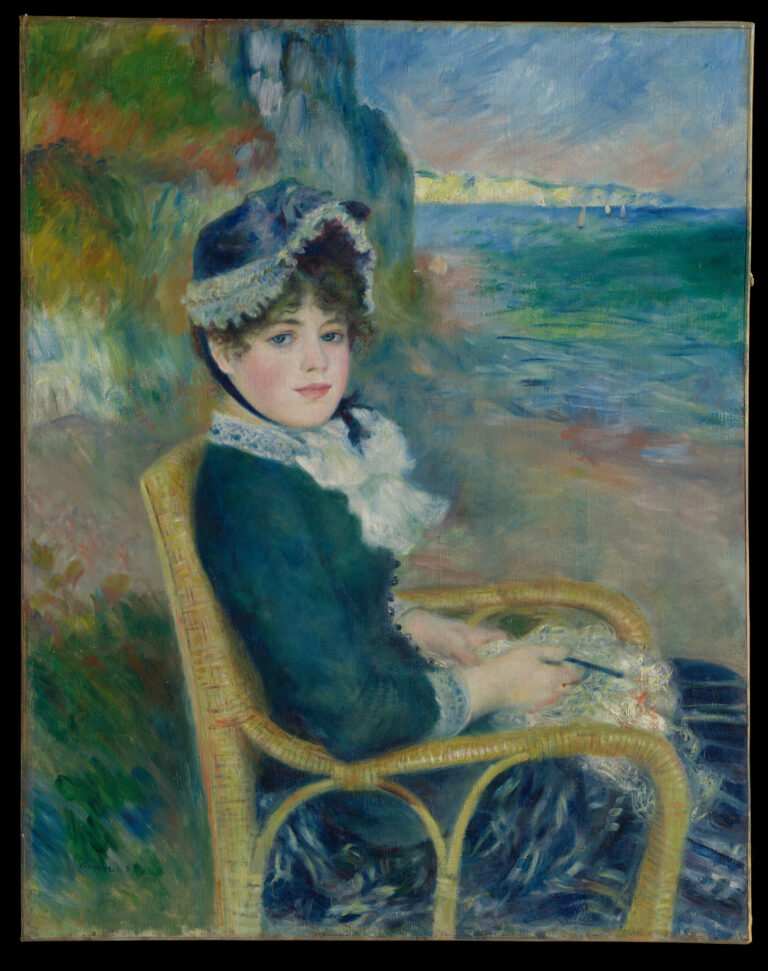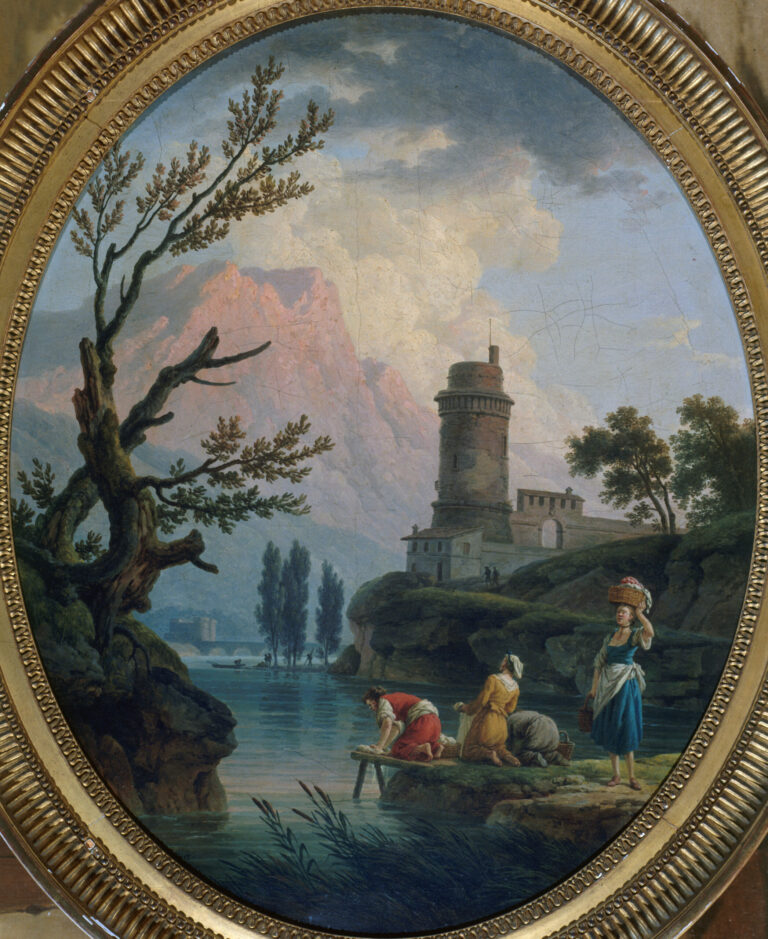In this luminous and contemplative canvas, Harpignies invites us on a woodland journey of remarkable poetic quality.
A winding path guides our gaze through a forest of slender trunks that stretch majestically skyward. The verticality of the pines, rendered with both precision and sensitivity, creates a dynamic rhythm that contrasts with the earthen path below.
At the heart of this verdant theater, two figures—likely a father and son—walk together, introducing a human narrative dimension to the landscape. The artist masterfully plays with contrasts between the cool shadows of the foreground and the golden light bathing the background, where azure sky glimpses through the foliage. This subtle orchestration of light, characteristic of the Barbizon school, infuses the work with a contemplative atmosphere and suspended temporality.
About the Artwork
- Title: Fir Trees in Les Trembleaux, near Marlotte
- Artist: Henri-Joseph Harpignies
- Date: 1854
- Dimensions: 16 1/4 × 12 5/8 in. (41.3 × 32.1 cm)
- Location: The Metropolitan Museum of Art, Fifth Avenue, New York, not currently on display
- https://www.metmuseum.org/art/collection/search/459104
Henri-Joseph Harpignies (1819-1916), nicknamed “the Michelangelo of trees and peaceful countrysides” by Anatole France, was one of the great masters of 19th-century French landscape painting. A disciple of Jean-Alexis Achard and profoundly influenced by Corot, he developed a personal style combining compositional rigor with atmospheric sensitivity.
This 1854 work represents a pivotal period in his career when he progressively freed himself from academic conventions to explore outdoor motifs, following in the tradition of the Barbizon painters. With an exceptional artistic longevity spanning nearly seventy years, his career evolved from late Romanticism to the beginnings of modernism while maintaining a poetic and structured vision of nature.

